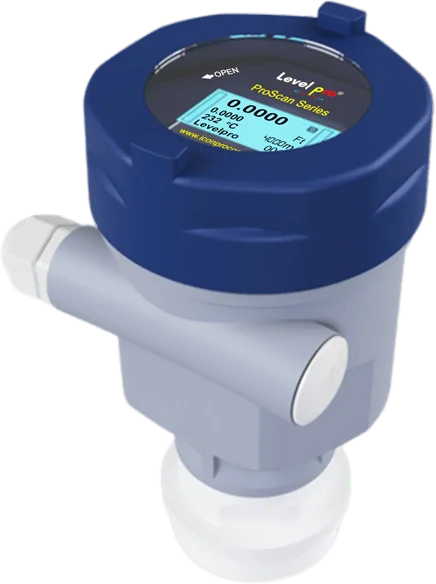Understanding the Difference 26 GHz and 80 GHz Tank Level Radar Sensors

Radar level sensors operate by emitting a radio wave and measuring the time it takes for the wave to bounce back after it hits the surface of the substance being measured. The frequency of the radio wave determines the resolution of the measurement, with higher frequencies providing higher resolution.
1. 26 GHz radar level sensors operate at a frequency of 26 GHz (gigahertz), which is in the millimeter wave frequency range. These sensors are typically used for measuring the level of liquids and solids in tanks, silos, and bins. They are known for their high resolution and ability to penetrate through dust, vapor, and other contaminants that can interfere with other types of sensors.
2. 80 GHz radar level sensors operate at a frequency of 80 GHz (gigahertz), which is also in the millimeter wave frequency range. These sensors are typically used for measuring the level of liquids and solids in tanks, silos, and bins. They are known for their high resolution and ability to penetrate through dust, vapor, and other contaminants that can interfere with other types of sensors.
One key difference between 26 GHz and 80 GHz radar level sensors is the beam width, or the width of the radio wave as it travels through the air. 26 GHz sensors have a wider beam width, which means they can measure a larger area with a single measurement. This can be beneficial in applications where the surface of the substance being measured is not perfectly flat or level. 80 GHz sensors, on the other hand, have a narrower beam width, which allows for higher resolution measurements but requires the surface to be relatively flat.
Another difference between the two types of sensors is the penetration depth, or the ability of the radio wave to pass through the substance being measured. 26 GHz sensors have a deeper penetration depth, which means they can measure substances at deeper levels. 80 GHz sensors have a shallower penetration depth, which means they are better suited for measuring shallower surfaces.
Overall, the choice between 26 GHz and 80 GHz radar level sensors will depend on the specific application and the requirements for resolution, beam width, and penetration depth. Both types of sensors are widely used in a variety of industries and can provide accurate and reliable measurements of the level of liquids and solids in tanks, silos, and bins.
Learn more about radar level sensors
Please contact us to discuss your application


